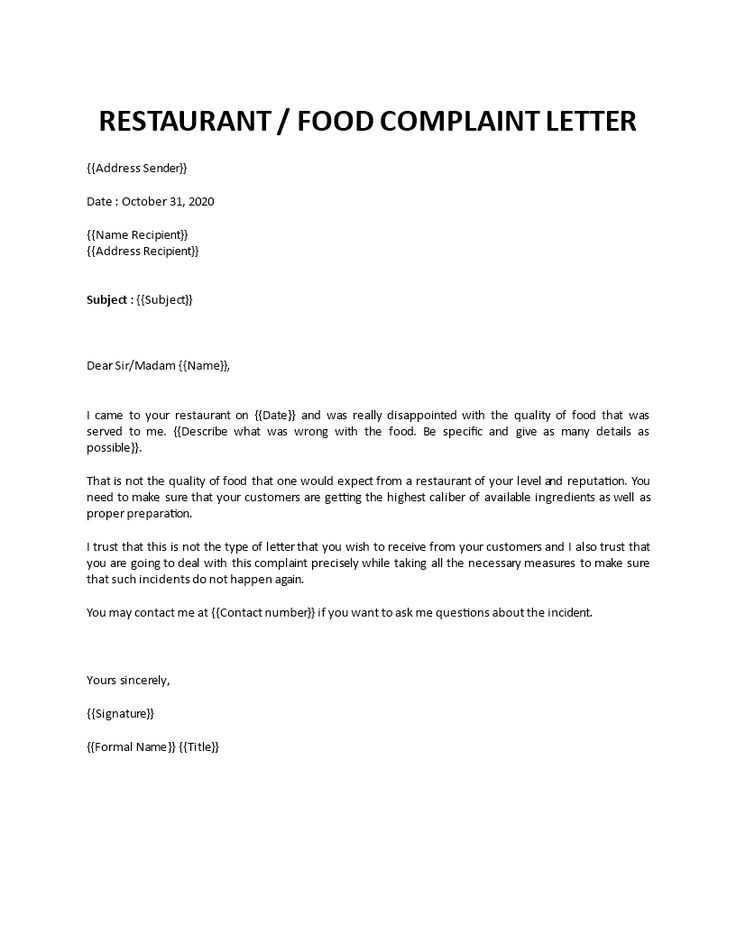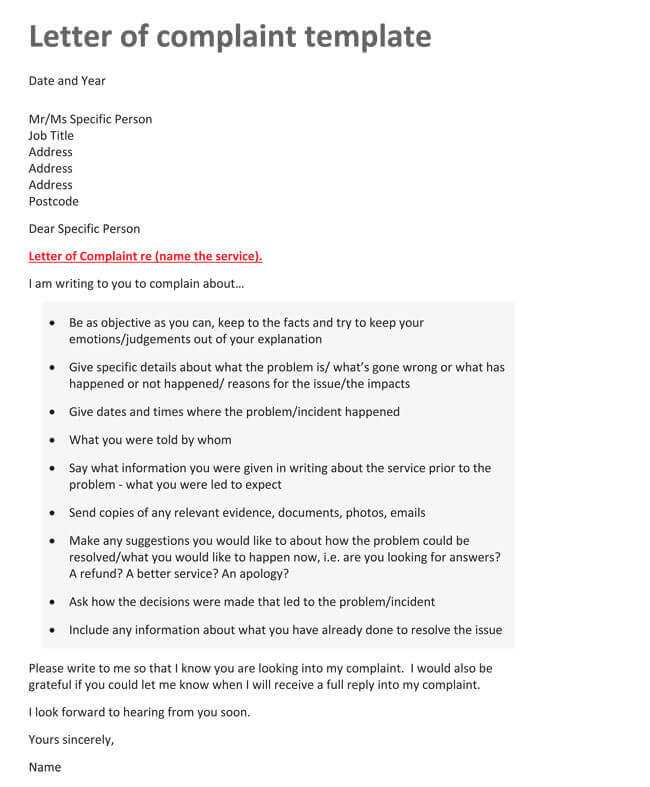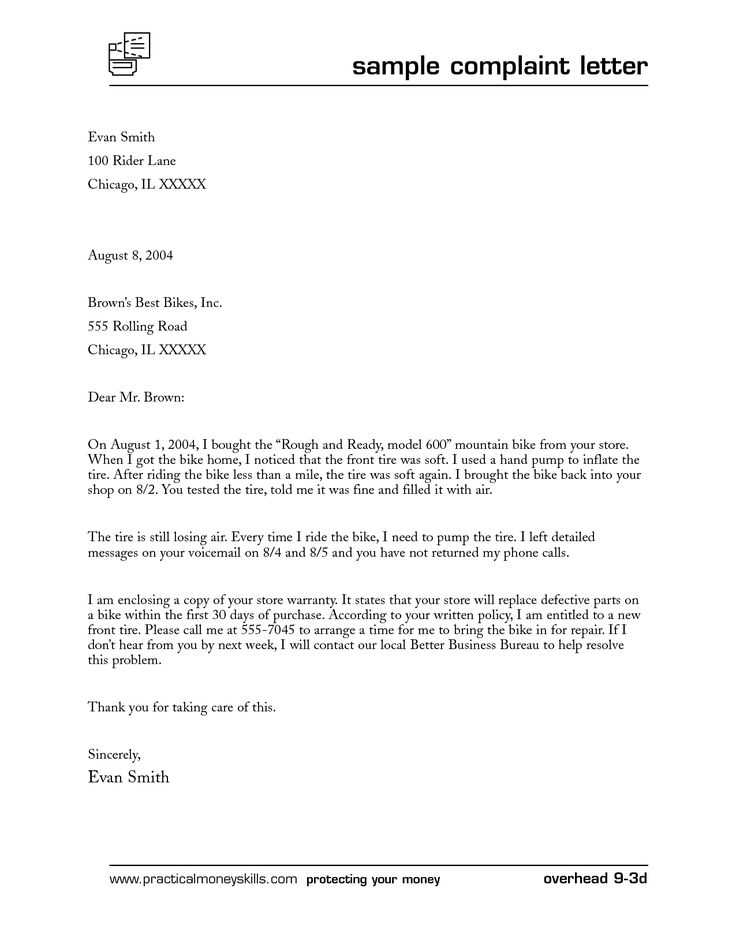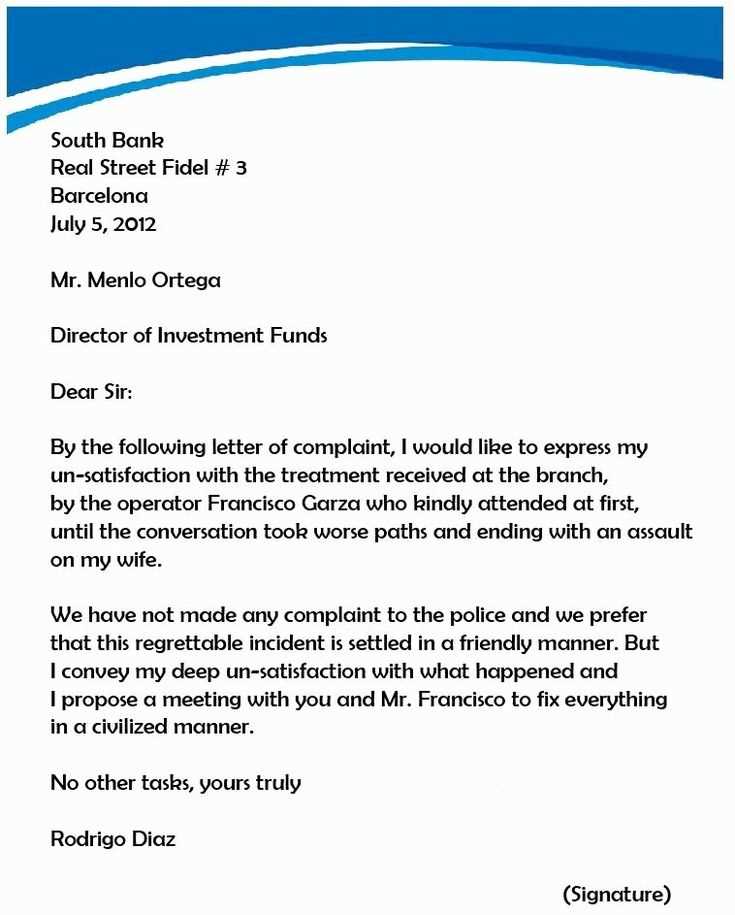Housing Complaint Letter Template for Quick Resolution

When problems arise in rented spaces, it’s crucial to communicate your concerns clearly and formally. Having a structured approach ensures that the situation is understood and can be resolved quickly. A well-crafted document helps establish your expectations and provides a formal record of the issue, which can be used to escalate the matter if necessary.
What to Include in Your Formal Communication

To effectively express your concerns, make sure to cover the following aspects:
- Clear Description: Be specific about the issue, including the exact nature of the problem, when it started, and how it affects your daily living.
- Expected Resolution: Clearly state how you would like the situation to be addressed, including a reasonable timeline for the fix.
- Supporting Evidence: Provide any relevant documentation or photos that support your claims and show the severity of the issue.
- Professional Tone: Maintain a respectful and professional tone throughout to ensure that your request is taken seriously.
Step-by-Step Process for Creating an Effective Document
- Start with a Header: Address the recipient by name (or their official title), and include any reference numbers related to your lease or previous communications.
- Provide a Brief Introduction: Mention the purpose of the communication and the specific issue you are addressing.
- Describe the Situation: Offer detailed information about the problem, including dates and any communication history regarding the matter.
- State Your Request: Politely but firmly explain what actions you expect from the recipient to resolve the situation.
- End with a Call to Action: Request a response by a certain date and mention any further actions you may take if the issue is not addressed.
Common Pitfalls to Avoid

- Vague Language: Avoid generalizations or vague statements. Be specific about the issue.
- Overly Emotional Tone: Stick to the facts and avoid expressing frustration in a way that might hinder a constructive response.
- Failure to Follow Up: If you don’t hear back within the expected time frame, follow up with a polite reminder or consider other legal avenues if necessary.
By following these guidelines, you ensure that your concerns are presented clearly, and you increase the likelihood of a swift and effective resolution to your housing problem.
Understanding the Importance of Addressing Issues in Rental Spaces

When challenges arise in rented properties, it’s essential to communicate your concerns in a clear and structured manner. Taking a formal approach not only helps resolve the issue promptly but also protects your rights as a tenant. Clear communication fosters mutual understanding and sets the stage for a constructive solution.
Key Elements of a Well-Constructed Document
To ensure your message is effective, focus on these critical elements:
- Clear Identification of the Problem: Detail the issue precisely, including the date it began and how it impacts your daily living.
- Reasonable Solution Request: Specify what action you expect from the landlord or property management, along with a fair timeline for resolution.
- Documentation Support: Attach any photos, recordings, or prior communications that back up your claim.
- Professional Tone: Keep the communication polite and factual to ensure it’s taken seriously and does not escalate unnecessarily.
How to Effectively Communicate with Your Property Manager
Start by addressing the recipient correctly, using their full name or position. Be brief but direct in stating the purpose of your communication. Avoid long-winded explanations and focus on the issue at hand.
Common Mistakes to Avoid
- Being Vague: General terms like “it’s bad” or “needs fixing” don’t provide enough information for resolution.
- Emotional Language: Avoid venting frustration or using an accusatory tone, as it may hinder productive dialogue.
- Neglecting to Include Supporting Information: Always back your claim with evidence–photos, emails, or maintenance reports.
How to Make Your Message Stand Out
Focus on clarity and precision. Use a straightforward format that’s easy to read, and emphasize key points. A direct approach often yields quicker results.
Steps to Take After Sending Your Formal Request
If you don’t receive a response within the expected timeframe, follow up politely. If there’s still no action, consider alternative channels like mediation, legal advice, or escalating the matter through official channels.